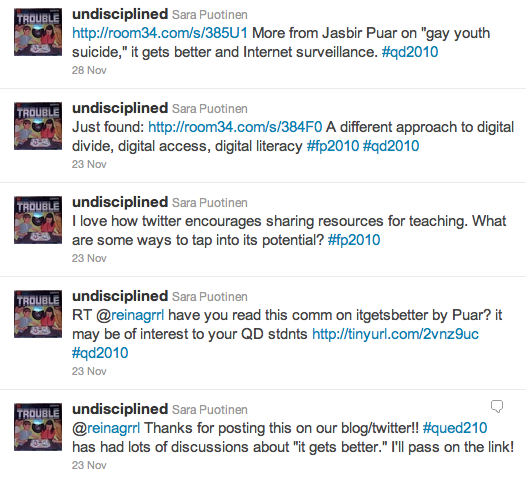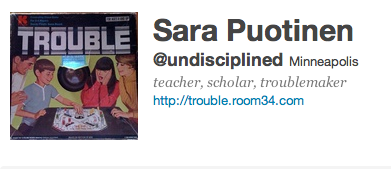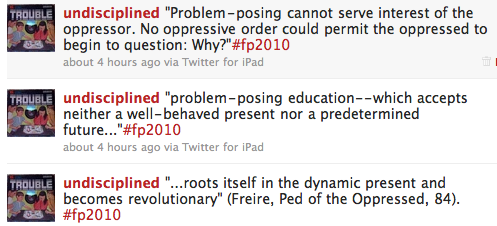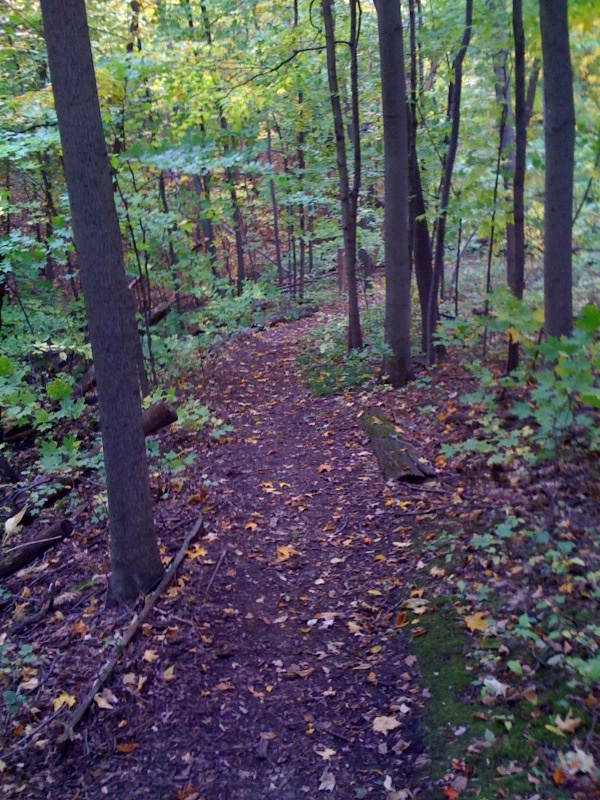Note: The following is a sample class discussion on feminist pedagogy, digital literacy and twitter. The purpose of this discussion is to generate a feminist curiosity about feminist digital literacy and twitter and to get students thinking critically about social media in the classroom.
To tweet or not to tweet…that is not the question.
Consider the following passage from Academic Hack in their entry, “On What it Would Mean to Really Teach ‘Naked”:
Teaching without digital technology is an irresponsible pedagogy. Why? The future is digital, love it or hate it. We can argue later about whether or not this is a good or a bad thing. (Hint: the answer is both.) But to educate students, or to attempt to educate students without developing their digital literacy is to leave them ill prepared for their futures. Eliminating technology produces not the affect [sic] of a more engaged literate student populous, rather it produces the reverse, an ill informed, uncritical, unengaged student populous who will become at the very best passive consumers of the technology being resisted, and at the worst its willing victims.
I want to take AcademicHack’s claim seriously (not necessarily to agree, but to take it seriously by critically engaging with it) and think about the importance of digital literacy in terms of feminist pedagogy and practicing and theorizing about twitter. How can/should feminist educators discuss digital literacy in relation to twitter? What sorts of conversations should we/they have and what practices should we/they engage in order to develop feminist digital literacy?
Twitter Basics
Before moving into a discussion of twitter and feminist digital literacy, I want to offer up some twitter basics.
1. What is twitter? According to the official about twitter site:
Twitter is a real-time information network that connects you to the latest information about what you find interesting. Simply find the public streams you find most compelling and follow the conversations.
At the heart of Twitter are small bursts of information called Tweets. Each Tweet is 140 characters in length, but don’t let the small size fool you—you can share a lot with a little space. Connected to each Tweet is a rich details pane that provides additional information, deeper context and embedded media. You can tell your story within your Tweet, or you can think of a Tweet as the headline, and use the details pane to tell the rest with photos, videos and other media content. See it in action.
2. How does twitter work? Here are just a few basics. If you want more, check out: twitter basics, How to Start Tweeting (and Why You Might Want To), and this twitter cheat sheet
disclaimer: People/organizations are using twitter in all sorts of ways that I haven’t even begun to imagine–especially since I just started experimenting on twitter this past August. My discussion merely touches upon some basic ways that twitter logic works.
- Brief posts (called tweets) are limited to 140 characters or less
- Post updates about what you’re doing, thinking, reading
- Share others’ ideas by retweeting (RT) their posts
- Create lists of people on twitter, organized under a topic (e.g.: class list)
- Use hashtags (#) to tag post as related to a particular topic (e.g.: #fp2010)
- Reply directly to other twitter accounts (tweeps/tweeple?) or mention them in your tweets by including @ + their twitter name in your tweet.
- Tweets are posted in “real time” with most recent tweets at the top–the twitter timeline
- Tweets often include links to blog posts or pictures (twitpics).
- Other people can find you and follow your twitter timeline. You can also follow them.
3. How is twitter different from facebook?
- Twitter is a public site. There is not an expectation of privacy.
- People who read your tweets are your followers, not friends.
- Twitter has a 140 character limit.
- Twitter relies on crowdsourcing and how it is used is driven more by how people are using it and experimenting with it. Example: hashtags
Here’s a helpful youtube video that explains a key purpose of twitter: “real life happens between blog posts and emails. And now there’s a way to share”
Uses of twitter in the classroom
If we have time, we can return to this discussion. For now, here’s just a few ways I’m using it for research and teaching:
- live-tweeting class (tweeting comments/summaries of what is being said in class as it is being said)
- live-tweeting class readings (tweeting passages from and questions about the text as I read it)
- answering questions tweeted by class members
- posting announcements
- posting questions/queries to the class
- sharing links to relevant sources
- live-tweeting extra office hours (haven’t tried this one yet)
- experimenting with different accounts (tweet as class administrator + tweet as myself: undisciplined)
Here are some more ideas from AcademicHack. Also, some reflections on the art of the tweet. Also, check out my three twitter accounts: qued2010, femped2010, undisciplined
Discussion: Twitter, authenticity, lived experience, and daily habits
We could talk about the limits and possibilities of twitter in many different ways in relation to feminism and feminist pedagogies. For example, how does twitter work for (and/or against) activism? Lots of folks are critically reflecting on this question. Check out Malcolm Gladwell’s article about twitter and “Why the Revolution Will not be Tweeted.” Over at DigiActive, they put together a guide to Twitter for Activism. And Ronak Ghorbani offers up a series of podcasts + analysis on tweeting feminists.
We could also talk about how twitter works in encouraging back channel conversations in classrooms (during lectures and discussions) and in conferences. We could discuss this in relation to class distractions and the need for paying and shifting attention. Check out “Designing Choreographies for Attention” for more. Sample Reality offers up an interesting take on the value of “snark” (or, sarcastic, irreverent comments about the readings or the instructor’s teaching). In terms of using twitter for conference conversations, check out how it was used in the 2010 NWSA conference (they had the live feed on their website).
While these are all great conversations to have (and ones we could continue on this blog), I want to focus on one other way in which to discuss twitter and feminist digital literacy: authenticity, lived experience, and daily habits.
My focus on authenticity, lived experience and daily habits is partly inspired by Berenice Malka Fisher and her claim, in No Angel in the Classroom, that we “try to bring our most authentic [read: complicated, uncertain, multiple, honest] selves” into the classroom (51). Can we achieve authenticity through the documenting of our lived experience? Through the repeated archiving and sharing of our daily habits? Can we “authentically” connect with others through our engagement with their tweets? What are the limits and possibilities of this archiving/documentation/sharing/engagement?
The following represent two different “moments” related to twitter and the above questions:
Moment One: I tweet, therefore I am, but if I don’t tweet it, did it happen?
Two related events:
a. Peggy Orenstein is sitting with her daughter in her front yard, enjoying the beautiful weather and listening to a download of E.B. White reading “The Trumpet of the Swan.” Instead of “being fully present in the moment,” she reflects on how best to capture the experience with a tweet. She wonders: “when every thought is externalized, what becomes of insight? When we reflexively post each feeling, what becomes of reflection? When friends become fans, what happens to intimacy?” And concludes: “The risk of the performance culture, of the packaged self, is that it erodes the very relationships it purports to create, and alienates us from our own humanity.”
- Does tweeting “alienate us from our own humanity”?
- What sort of authentic expressions are possible via twitter?
- Is authenticity counter to/in conflict with performativity/performance?
- How does twitter work differently for different bodies and different expressions?
- Can we use twitter to express (and value) our lived experiences?
- What are the problems and possibilities of expressing/relying on/invoking lived experiences?
- In a youtube video about twitter it is suggested that twitter is concerned with documenting “the real life that happens between blog posts and emails.” What value do you see in expressing and documenting these aspects of real life?
b. BIll Nye (the Science guy) is giving a lecture at USC. Suddenly he falls to the floor. Instead of rushing to his aid, it appears that students quickly whip out their smart phones and begin tweeting about the event. The Lookout, a Yahoo news blog, describes it as an example of “civic indifference” and “youthful digital passivity.” The Lookout article links this event with what it describes as “an even more disturbing” example of civic indifference: the posting of images online, in real time, of the shooting and death of “Messy Mya,” a New Orleans comedian and youtube sensation. The Lookout article makes the rounds on facebook, possibly serving as further evidence of the evils of social media.
- Do social media like twitter encourage “civic indifference” and “youthful digital passivity”? How?
- Are there other ways than “youthful digital passivity” to read what was happening with the posting of the image of Messy Mya’s death? How do the events (and the bodies of the “victims”) differ in these two cases? Are these differences important in thinking critically about how twitter works and what it does (or what we can do with it)?
- (How) does tweeting an event make it more “real”? Does this type of “realness” = authenticity and truth?
Moment Two: Following others’ tweets and the limits of sharing
Joel Johnson writes a blog entry entitled, “Why I Stalk a Sexy Black Woman on Twitter (and why you should too)” for gizmodo. He encourages readers to follow someone on twitter that they wouldn’t encounter in everyday life. In a follow-up post, largely written to respond to intensely negative reaction to his initial post, Johnson writes:
You’ve been on Twitter, haven’t you, @shani_o? It’s a website where people post things they choose to display to the public, including—unless one has a perfect follower-to-follows ratio or a private account—several people you don’t know at all who choose to pay attention to your life, your thoughts, and whatever else you choose to share. Rather than worry that I might be viewed as a sociopath for using Twitter exactly in the way for which it was designed, I choose to instead be excited about all the new people and perspectives that are right at my eyeballs’ fingertips. But that doesn’t mean I want—or am even capable of—becoming fast friends with every single person I observe (or read, or watch, or whatever) on the internet. No one really wants that—except for creepy people.
- How are the expressions of our lived experiences valued and/or devalued when presented in twitter-logic (with 140 characters + random followers + the impulse to be witty and “cute” and quick)?
- What happens when our authentic/crafted/performed tweets are taken up by others?
- What are the dangers and limits of tweeting?
- Is Twitter designed in order to “other” people? Does it encourage us to pay attention to each other in ways that are objectifying and oppressive? Can we imagine sharing and expression of self in ways outside of this model? Does twitter allow for that?
A few final questions: Is twitter fundamentally flawed? Is it possible to use it subversively and disobediently (in ways that it was never intended) in order to further our feminist goals? How might we use it in tandem with other methods (a both/and instead of either/or model)? What important conversations about twitter should we have inside and outside of our feminist classrooms?















